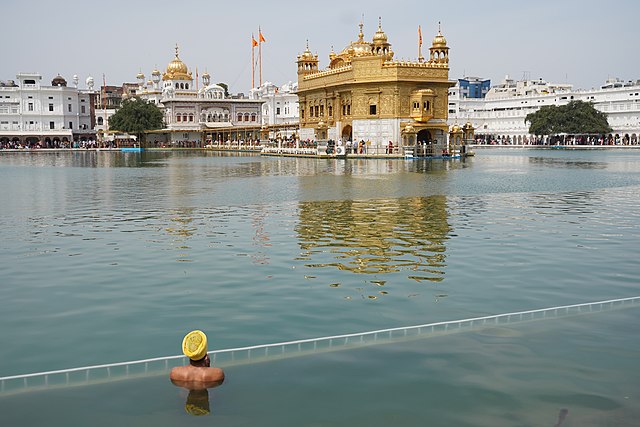Have you ever wondered why millions of people from around the world are drawn to photograph one particular building in Amritsar? The answer lies in the breathtaking beauty of Harmandir Sahib, commonly known as the Golden Temple. This architectural marvel isn’t just a place of worship – it’s a photographer’s paradise that tells stories of faith, history, and human devotion through every golden reflection.
The Magnificence of Harmandir Sahib: An Introduction
When you first lay eyes on Harmandir Sahib, you’ll understand why it’s considered one of the most photographed religious buildings in the world. This isn’t just about its golden exterior – though that certainly catches the light beautifully. The temple represents the heart of Sikhism, where spirituality meets stunning architecture in perfect harmony.
The Golden Temple stands majestically in the center of a sacred pool called the Amrit Sarovar, creating natural reflections that photographers dream about. Every angle offers a new perspective, every moment brings different lighting, and every season transforms the temple’s appearance. It’s like having a living, breathing subject that never grows old or loses its charm.
What makes Harmandir Sahib photos so special is the combination of spiritual energy and visual splendor. You’re not just capturing a building – you’re freezing moments of devotion, architectural brilliance, and centuries of history in a single frame. The temple welcomes visitors from all faiths, making it a truly inclusive space where diversity and unity coexist beautifully.
Historical Significance Behind Every Photograph
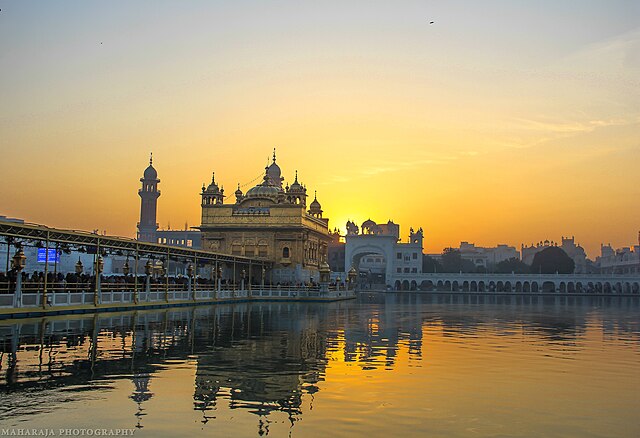
Every photo you take of Harmandir Sahib carries within it layers of rich history dating back to the 16th century. When Guru Ram Das founded Amritsar in 1577, he probably couldn’t have imagined that his vision would become one of the most photographed places on Earth. The temple we see today, with its distinctive golden dome and intricate architecture, evolved over centuries.
The golden covering that gives the temple its nickname was added much later, during the reign of Maharaja Ranjit Singh in the early 19th century. This means when you photograph those gleaming walls, you’re capturing not just beauty, but the generosity and devotion of countless individuals who contributed to this magnificent structure.
Understanding this history adds depth to your photography. When you frame the temple’s reflection in the sacred pool, you’re showing how the Gurus envisioned a place where earth and heaven meet. The four entrances, each facing a cardinal direction, symbolize openness to all humanity – a powerful message that your photos can convey to viewers worldwide.
The Architecture That Mesmerizes Photographers
The architectural genius of Harmandir Sahib lies in its unique blend of Islamic and Hindu design elements, creating a visual feast that photographers can’t resist. The temple’s square base, topped with a golden dome, creates perfect symmetry that works beautifully in photographs. The intricate marble work at the lower level contrasts magnificently with the golden upper portion, giving your photos natural layers and depth.
What’s truly remarkable is how the architects designed the temple to be lower than the surrounding walkway. This means visitors must step down to enter, symbolizing humility – and it also creates fantastic elevated photography angles. The delicate inlay work, featuring floral patterns and Sikh religious symbols, provides incredible detail shots for macro photography enthusiasts.
The four sides of the temple each tell their own story through architectural elements. The entrance side, with its ornate doorway and inscription of Sikh prayers, offers compelling close-up opportunities. Meanwhile, the sides facing the other directions provide different perspectives on the golden facade, each with its own character and photographic potential.
Sacred Waters: Reflecting Divine Beauty
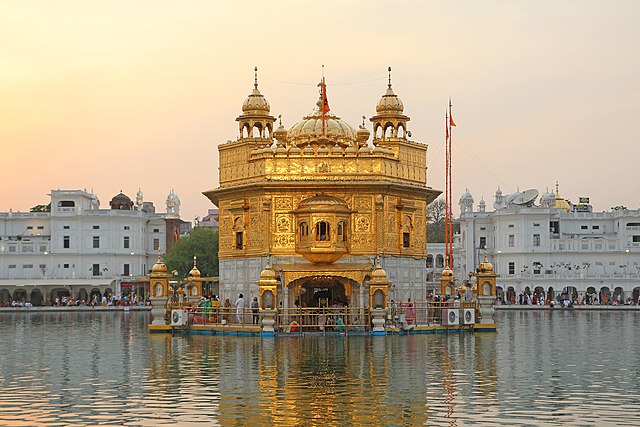
The Amrit Sarovar isn’t just a body of water – it’s a photographer’s secret weapon for creating stunning Harmandir Sahib photos. These sacred waters act as a natural mirror, doubling the visual impact of every shot. The reflections aren’t just pretty; they’re symbolic of the Sikh belief that the divine can be found in all things, including our own reflection.
The water’s surface changes throughout the day, affecting your photos dramatically. In the early morning, when the air is still, you’ll get mirror-perfect reflections that create symmetrical compositions. As the day progresses and gentle breezes ripple the surface, you’ll capture more abstract, impressionistic reflections that add movement and life to your images.
Don’t overlook the practical aspects of photographing these sacred waters. The pool is quite large, allowing you to vary your distance from the temple and create different scales in your compositions. From close-up shots that emphasize the temple’s details to wide-angle captures that show the entire complex reflected in the water, the Amrit Sarovar offers endless creative possibilities.
Best Times to Capture Harmandir Sahib Photos
Timing is everything in photography, and this couldn’t be truer when photographing Harmandir Sahib. The temple looks different at every hour, but some times are simply magical. Understanding when to visit can transform your photography from good to absolutely breathtaking.
The Golden Temple never closes, which means you have 24-hour access to capture its beauty. This unique feature sets it apart from most religious sites and gives photographers incredible flexibility. Whether you’re an early bird who loves sunrise shots or a night owl fascinated by illuminated architecture, Harmandir Sahib accommodates your creative schedule.
Weather plays a crucial role too. Post-monsoon months offer crystal-clear skies that make the golden dome pop against brilliant blue backgrounds. Winter mornings sometimes bring a light mist that adds mystery and atmosphere to your shots. Even rainy days can be magical, with water droplets adding texture and the wet surfaces creating additional reflections.
Golden Hour Magic: Dawn and Dusk Photography
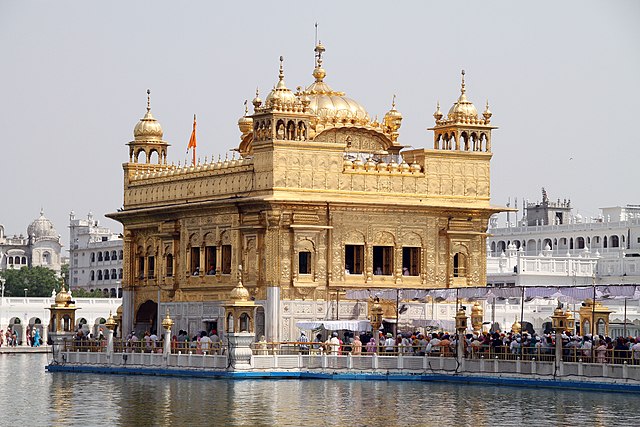
If you want to capture Harmandir Sahib photos that truly glow, you need to understand the magic of golden hour. This isn’t just a photography cliché – it’s especially relevant when photographing a building literally covered in gold. During the first hour after sunrise and the last hour before sunset, the warm light makes the temple’s golden surfaces come alive with an inner fire.
Dawn photography at the Golden Temple offers something special: serenity. The complex is quieter, allowing you to capture the temple’s peaceful essence. The soft morning light gradually illuminates the golden dome, creating a natural progression that’s perfect for time-lapse photography. Plus, the lack of crowds means cleaner compositions and more opportunities for long exposures.
Sunset photography brings its own rewards. The sky often explodes with colors that complement the temple’s golden hues beautifully. The evening light angle hits the temple differently than morning light, creating shadows and highlights that reveal new architectural details. As darkness falls, the temple’s artificial lighting takes over, offering opportunities for dramatic night photography.
Festival Photography: Capturing Celebrations
Festivals transform Harmandir Sahib into an even more photogenic spectacle. The temple, already beautiful on normal days, becomes absolutely magical during religious celebrations. These events offer unique photography opportunities that showcase not just the temple’s beauty, but also the vibrant culture and devotion of the Sikh community.
The energy during festivals is palpable and adds life to your photos. Thousands of devotees dressed in colorful traditional clothing create human elements that complement the golden architecture beautifully. The combination of spiritual devotion and festive joy creates emotional depth in your images that viewers can feel.
Festival photography requires different skills than architectural photography. You’ll need to be respectful while capturing candid moments, work with changing light conditions as day turns to night, and navigate larger crowds while maintaining your creative vision. The results, however, are photographs that tell complete stories rather than just showing beautiful buildings.
Diwali Illuminations
Diwali at Harmandir Sahib is a photographer’s dream come true. The temple complex is decorated with thousands of oil lamps and electric lights, creating a golden wonderland that seems almost surreal. The reflections of these lights in the Amrit Sarovar multiply the visual impact, creating compositions that look like scenes from a fairy tale.
The challenge with Diwali photography is technical – you’re shooting in low light conditions with multiple light sources of different intensities. This is where understanding your camera’s capabilities becomes crucial. Long exposures can capture the movement of lights and people, creating dynamic images that convey the festival’s energy.
The crowds during Diwali are massive, but this isn’t necessarily a problem for photographers. The sea of people holding oil lamps creates opportunities for stunning silhouette shots against the illuminated temple. The key is to embrace the chaos rather than fight it, using the crowds as compositional elements rather than obstacles.
Guru Nanak Jayanti Festivities
Guru Nanak Jayanti, celebrating the birth of Sikhism’s founder, brings a different kind of photographic opportunity. The celebrations are more solemn and spiritual compared to Diwali’s festive atmosphere, offering chances to capture deep devotion and religious reverence. The temple decorations are more understated but equally beautiful, focusing on flowers and religious symbols rather than lights.
During Guru Nanak Jayanti, you’ll witness unique traditions that make for compelling photography. The continuous reading of the Guru Granth Sahib, the community meals served to thousands, and the special prayers all provide documentary-style photography opportunities. These images tell the story of a living religion and its devoted followers.
The lighting during these celebrations is often more natural and soft, creating intimate portraits of devotees in prayer. The golden temple serves as a magnificent backdrop for human stories of faith and community. Your photos can capture both the grandeur of the architecture and the personal spiritual experiences of individuals.
Photography Techniques for Harmandir Sahib

Photographing Harmandir Sahib successfully requires more than just pointing and shooting. The unique challenges and opportunities presented by this golden marvel demand specific techniques and approaches. Understanding these methods will elevate your temple photography from tourist snapshots to professional-quality images.
The interplay of light, water, and golden surfaces creates complex exposure situations. You might find yourself dealing with bright reflections, deep shadows, and high contrast scenes all in a single frame. This is where your technical knowledge and creative vision must work together to create compelling images.
Composition becomes even more critical when photographing such an iconic subject. Everyone has seen photos of the Golden Temple, so your challenge is to find fresh perspectives and unique angles that make viewers see this familiar place with new eyes. This requires both technical skill and creative thinking.
Equipment Recommendations for Temple Photography
While you can photograph Harmandir Sahib with any camera, including smartphones, having the right equipment opens up more creative possibilities. A camera with good low-light performance is essential, especially for dawn, dusk, and night photography. The temple’s golden surfaces can be quite bright during midday, while the surrounding areas might be in shadow, requiring a camera with good dynamic range.
A polarizing filter is incredibly useful for temple photography. It can reduce glare from the golden surfaces and enhance the contrast between the temple and the sky. When photographing the reflections in the Amrit Sarovar, a polarizing filter can help you control how much of the reflection you want to show, giving you creative control over the water’s appearance.
Tripods are particularly valuable for Harmandir Sahib photography. Long exposures can smooth out the water surface for perfect reflections, capture the movement of clouds across the sky, or create light trails from the temple’s illumination at night. Many of the best temple photographs require the stability that only a tripod can provide.
Composition Tips for Sacred Architecture
Composing photographs of sacred architecture requires sensitivity to both artistic principles and religious significance. The Golden Temple’s design inherently follows many photographic composition rules – its symmetry, golden ratio proportions, and natural leading lines make it a photographer’s dream subject. Understanding how to use these elements will improve your images dramatically.
The temple’s position in the center of the sacred pool creates natural framing opportunities. You can use the pool’s edges, the surrounding walkways, or even architectural elements like doorways and arches to frame your shots. This technique draws the viewer’s eye directly to the temple while providing context and depth to your composition.
Layering is particularly effective with Harmandir Sahib photography. The foreground might include devotees or architectural details, the middle ground features the temple itself, and the background shows the sky or surrounding buildings. This creates depth and tells a more complete story than simple, flat compositions.
Rule of Thirds in Temple Photography
The rule of thirds works beautifully with Harmandir Sahib photography, but you need to apply it thoughtfully. Instead of just placing the temple at an intersection point, consider what story you want to tell. Placing the temple in the lower third with an expansive sky above emphasizes the temple’s spiritual reach toward heaven. Positioning it in the upper third with more water in the foreground emphasizes reflection and contemplation.
The temple’s dome naturally draws the eye upward, making it perfect for vertical compositions that follow the rule of thirds. The horizontal elements – the temple’s base, the water line, and the surrounding walkways – provide natural division lines that work well with this compositional technique.
Don’t be afraid to break the rule of thirds when it serves your artistic vision. The Golden Temple’s perfect symmetry sometimes calls for centered compositions that emphasize balance and harmony. The key is understanding the rule well enough to know when breaking it creates a stronger image.
Symmetry and Reflections
Symmetry is built into Harmandir Sahib’s very design, making it a natural subject for symmetrical compositions. The temple’s four-sided structure, identical from each direction, creates perfect symmetry no matter which angle you choose. The challenge is using this symmetry to create compelling rather than static images.
Reflections in the Amrit Sarovar double the symmetrical impact, creating compositions that feel balanced and harmonious. Perfect mirror reflections work well for emphasizing the temple’s spiritual significance – the idea that divine beauty exists both in the physical world and in reflection. Slightly rippled reflections can add movement and life to otherwise static symmetrical compositions.
Vertical symmetry works particularly well with the Golden Temple. The temple above the waterline balances perfectly with its reflection below, creating compositions that feel complete and satisfying. Horizontal symmetry, using the temple as a central element with matching elements on either side, can emphasize the inclusive nature of Sikhism.
Popular Photo Spots Around the Golden Temple Complex
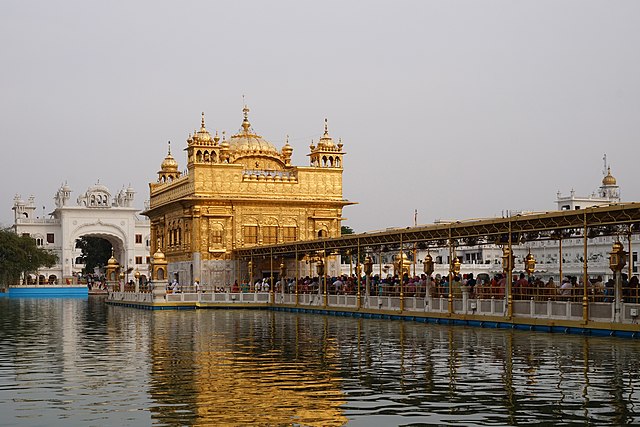
The Golden Temple complex offers numerous vantage points, each providing unique perspectives and photographic opportunities. Knowing where to position yourself can make the difference between a good photo and a great one. These spots have been discovered and refined by countless photographers over the years, but each offers room for personal interpretation and creativity.
The complex’s design naturally creates photography-friendly viewpoints. The elevated walkways around the sacred pool provide multiple angles and distances from the temple. Each position offers different relationships between the temple, water, sky, and surrounding architecture, giving you plenty of options for varied compositions.
Remember that popular spots can get crowded, especially during peak visiting hours and festivals. Part of successful temple photography is patience – waiting for the right moment when lighting, crowds, and other elements align perfectly. Sometimes the best shots come from being persistent and returning to the same spot multiple times.
The Central Causeway Perspective
The marble causeway that leads directly to the Golden Temple’s entrance offers one of the most dramatic and symbolic photography perspectives. This elevated walkway places you at the same level as the temple’s entrance, creating a sense of approach and pilgrimage that’s powerful in photographs. It’s also one of the few spots where you can capture the temple’s ornate entrance doors in detail.
From the causeway, you can create compelling leading line compositions where the walkway itself guides the viewer’s eye directly to the temple. This perspective emphasizes the journey aspect of visiting the Golden Temple – the physical and spiritual movement toward enlightenment. Including pilgrims walking along the causeway adds human elements that make the architecture more relatable.
The causeway also provides excellent opportunities for telephoto photography. From the far end, you can compress the perspective, making the temple appear larger and more imposing. This technique is particularly effective during crowded times when you want to isolate the temple from the busy surroundings.
Panoramic Views from the Parikrama
The parikrama, or circumambulation path around the sacred pool, offers 360-degree photography opportunities around Harmandir Sahib. Each point along this marble walkway provides a different angle on the temple, and walking the complete circuit can yield dozens of unique compositions. The elevated position gives you perfect views over the water while keeping you at a respectful distance from the temple itself.
From the parikrama, you can capture the temple in context with its surroundings. Wide-angle shots can include the temple, the entire sacred pool, and the surrounding buildings, showing the complete Golden Temple complex. This context helps viewers understand the temple’s relationship to its environment and the community that surrounds it.
The parikrama is also perfect for time-lapse photography. Setting up at one point and capturing the changing light throughout the day creates compelling sequences that show how the temple transforms from dawn to dusk. The movement of pilgrims around the path adds life and energy to these time-lapse sequences.
Respectful Photography: Guidelines and Etiquette
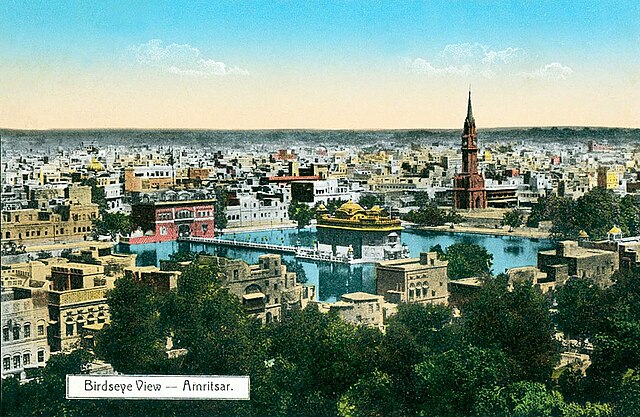
Photographing at Harmandir Sahib requires balancing your artistic vision with respect for the sacred space and its visitors. This isn’t just about following rules – it’s about understanding the spiritual significance of the place you’re documenting and ensuring your photography contributes positively to the experience of others.
The Golden Temple welcomes photographers and recognizes that images help spread awareness of Sikh culture and values worldwide. However, this welcome comes with responsibilities. Your behavior and approach to photography can either enhance or detract from the spiritual atmosphere that makes this place special.
Understanding photography etiquette at religious sites isn’t just about being polite – it often leads to better photographs. When you’re respectful and unobtrusive, people are more natural around you, leading to more authentic and powerful images. The spiritual energy you preserve through respectful photography often translates into more meaningful photographs.
Cultural Sensitivity in Sacred Spaces
Cultural sensitivity in Harmandir Sahib photography begins with understanding what you’re photographing. This isn’t just a beautiful building – it’s the spiritual heart of a religion and a place of deep personal significance for millions of Sikhs worldwide. Every photo you take should reflect this understanding and respect.
Dress appropriately and follow the temple’s guidelines: cover your head, remove your shoes, and dress modestly. These aren’t just rules for entry – they show respect that people will notice and appreciate. When you clearly respect the space, people are more likely to welcome your photography and even help you capture better images.
Be mindful of prayer times and religious ceremonies. These are sacred moments that deserve protection from intrusive photography. Sometimes the best thing you can do as a photographer is put your camera down and simply experience the spiritual energy of the moment. This often leads to a deeper understanding that improves your photography when you do pick up the camera again.
Photography Rules and Restrictions
While Harmandir Sahib is generally photography-friendly, there are important rules and restrictions to follow. Understanding these guidelines before you arrive ensures you can focus on creativity rather than worrying about whether you’re breaking rules. Most restrictions exist to protect the sacred nature of the space and ensure all visitors can have meaningful experiences.
Photography is generally not allowed inside the Golden Temple itself – the inner sanctum where the Guru Granth Sahib is kept. This restriction protects the privacy of worshippers during their most intimate spiritual moments. However, the exterior offers unlimited photography opportunities, and the interior restriction actually helps you focus on the architectural and environmental beauty.
Flash photography is discouraged in most areas, especially during prayer times. This isn’t just about rules – flash can be disruptive to people in prayer and meditation. Learning to work with available light makes you a better photographer anyway, and the Golden Temple’s natural and artificial lighting is usually sufficient for excellent photographs.
Digital Enhancement and Editing Tips
Post-processing Harmandir Sahib photos requires a delicate balance between enhancement and authenticity. The temple’s natural beauty is so stunning that heavy-handed editing can actually detract from its impact. The goal should be to optimize what you captured rather than create something that wasn’t there.
The golden surfaces of the temple respond beautifully to careful color and exposure adjustments. Small tweaks to highlights and shadows can bring out architectural details that might be lost in high-contrast situations. The key is subtlety – your edits should enhance the natural beauty rather than create an artificial look.
Working with water reflections in post-processing opens up creative possibilities. You can enhance the clarity of reflections, adjust their intensity, or even create perfect mirror effects when the original water surface wasn’t perfectly still. However, these techniques should serve your artistic vision while maintaining the integrity of the sacred space you’re documenting.
Preserving Authenticity While Enhancing Beauty
The challenge in editing Harmandir Sahib photos is enhancing their natural beauty without losing their authentic character. Over-saturation can make the golden surfaces look artificial, while too much contrast can create harsh shadows that don’t reflect the temple’s peaceful atmosphere. The goal is to make your photos look like the best possible version of what you actually saw.
Color correction is particularly important with Golden Temple photography. The gold surfaces can appear different colors depending on lighting conditions and camera settings. Subtle adjustments can ensure the gold looks rich and warm rather than yellow or orange. Pay attention to skin tones of people in your photos – they should look natural even after you’ve enhanced the architectural elements.
Dynamic range adjustments can help you deal with the challenging lighting conditions around the temple. The bright golden surfaces against darker water or sky often require careful shadow and highlight recovery. HDR techniques can be useful, but apply them subtly to avoid the over-processed look that can diminish the spiritual quality of your images.
Sharing Your Harmandir Sahib Photos
Once you’ve captured and processed your Harmandir Sahib photos, sharing them thoughtfully can help spread appreciation for Sikh culture and the temple’s beauty. Social media platforms, photography websites, and personal portfolios all offer opportunities to showcase your work while educating viewers about this remarkable place.
Consider the story you want your photos to tell. Are you documenting architectural beauty, spiritual devotion, cultural diversity, or historical significance? Understanding your narrative helps you select and sequence your photos effectively. A well-curated collection of temple photos can take viewers on a virtual pilgrimage, helping them understand both the visual beauty and spiritual significance of Harmandir Sahib.
Sharing temple photography also comes with responsibilities. Your images represent not just your artistic vision but also a sacred space and living religion. Thoughtful captioning that provides context and shows respect for the subject matter enhances the impact of your photographs and educates your audience.
Social Media Best Practices
Social media platforms offer incredible reach for your Harmandir Sahib photos, but each platform has its own culture and best practices. Instagram’s visual focus makes it perfect for showcasing the temple’s beauty, while Facebook allows for longer captions that can provide cultural and historical context. Understanding platform differences helps you optimize your sharing strategy.
Hashtags can help your temple photos reach interested audiences, but use them thoughtfully. Mix popular travel and photography hashtags with more specific ones related to Sikhism, Punjab, and sacred architecture. This approach attracts both photography enthusiasts and people genuinely interested in learning about Sikh culture.
Engagement with your audience can extend the educational impact of your photos. Responding to questions about the temple, Sikh practices, or your photography techniques creates conversations that spread understanding. Your photos become starting points for cultural exchange rather than just pretty pictures.
Building a Photography Portfolio
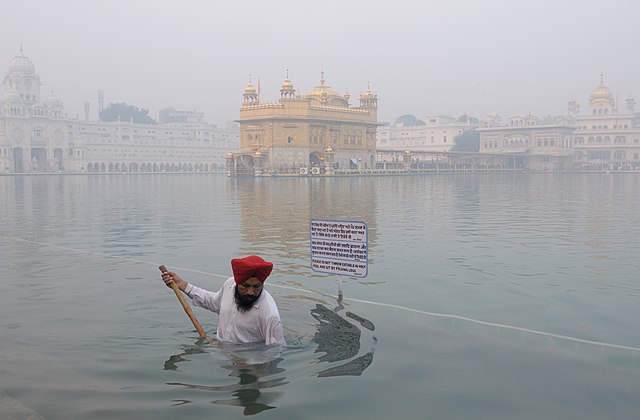
Harmandir Sahib photos can be powerful additions to a photography portfolio, especially if you’re interested in architectural, travel, or cultural photography. The temple’s combination of stunning architecture, rich history, and spiritual significance makes it an ideal subject for demonstrating multiple photography skills in a single location.
When building a portfolio around Golden Temple photography, include variety in your images. Show different times of day, various weather conditions, multiple perspectives, and both architectural details and environmental context. This range demonstrates your technical skills while telling a complete visual story about the temple.
Consider organizing your temple photos into series or projects. A series might focus on reflections, golden hour lighting, festival celebrations, or the interaction between architecture and devotees. This approach shows depth in your photographic thinking and creates more impact than individual images viewed separately.
Conclusion
Photographing Harmandir Sahib is more than just capturing beautiful images – it’s about documenting a living piece of history, spirituality, and architectural genius. The Golden Temple offers endless opportunities for photographers of all skill levels, from smartphone snapshots to professional architectural photography. Every visit reveals new perspectives, different lighting conditions, and fresh opportunities to see this magnificent structure through your unique artistic vision.
The key to successful Harmandir Sahib photography lies in balancing technical skill with cultural sensitivity, artistic vision with spiritual respect. When you approach the temple with both your camera and your heart open, you’ll create images that not only showcase its stunning beauty but also convey the deep spiritual significance that makes this place truly special.
Remember that your photos of Harmandir Sahib have the power to introduce people around the world to Sikh culture, architecture, and spirituality. Each image you share becomes an ambassador for understanding and appreciation. By photographing respectfully and sharing thoughtfully, you contribute to greater cross-cultural understanding while creating beautiful art that celebrates one of the world’s most magnificent religious structures.
Frequently Asked Questions
Q1: Can I use a drone to photograph Harmandir Sahib from above?
Drone photography is generally not permitted around the Golden Temple complex due to security restrictions and respect for the sacred space. The temple’s beauty is best captured from ground level anyway, where you can appreciate the architectural details and interact respectfully with the spiritual environment.
Q2: What’s the best camera setting for photographing the golden surfaces without overexposure?
Use spot metering on a mid-tone area rather than the bright gold surfaces, and consider slight underexposure (-1/3 to -2/3 EV) to preserve detail in the highlights. Shooting in RAW format gives you more flexibility to recover highlights and adjust exposure in post-processing.
Q3: Are there any restrictions on commercial photography at Harmandir Sahib?
Commercial photography typically requires special permissions from the temple authorities. If you plan to use your photos for commercial purposes, it’s best to contact the Shiromani Gurdwara Parbandhak Committee (SGPC) beforehand to understand the requirements and obtain proper authorization.
Q4: How can I photograph the Golden Temple during crowded festivals while being respectful?
During festivals, focus on wider shots that include the crowds as part of the story, use longer focal lengths to maintain distance from individual worshippers, and be patient for natural breaks in crowd density. Remember that the human element during festivals adds authenticity and energy to your images.
Q5: What’s the significance of the four entrances, and how can I incorporate this into my photography?
The four entrances represent openness to all directions and all people, symbolizing the inclusive nature of Sikhism. You can incorporate this by creating a series showing the temple from all four sides, or by using the entrances as framing devices that emphasize the welcoming nature of the sacred space.

